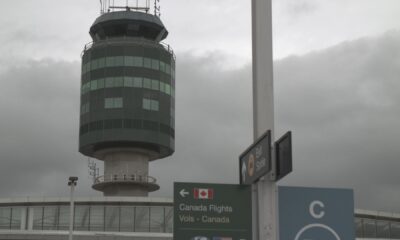Local News
City of Vancouver proposes fast-tracking social housing towers
As some Vancouverites plead for the city to slow down its approval of new towers, yet another proposal promises to add more tall buildings to neighbourhoods.
This latest push to fast-track affordable housing is called the Social Housing Initiative. Social housing built by non-profits and government organizations would be covered by new zoning, erasing the need to go to public hearing for each and every new project.
To qualify, the buildings would need to provide thirty per cent of their units to households below a certain income threshold set by BC Housing. Co-ops and supportive housing are covered under the current definitions.
Towers of up to 18 storeys would be possible in neighbourhood centres, which include Kitsilano, Point Grey, along Kingsway, and Commercial Drive. The downtown, Broadway Corridor, South West Marine Drive, Downtown Eastside, and Renfrew areas are excluded.
An architect with ten years of experience in the construction of social housing questions whether this will make a dent in the affordability crisis, especially for the middle class.
“Teachers, nurses, and firefighters are constantly being mentioned by politicians as people who should benefit from this, and none of them can afford the housing that is on offer,” said Brian Palmquist, who also blogs for City Hall Watch.
“We can have fairly large buildings, of which only 30 per cent would even approach affordability. And it will be done without any public hearings.”
In 2023, BC Housing’s Housing Income Limits established that households with an annual income of $58,000 or less would qualify to for a one-bedroom social housing unit at $1,450 a month. That income threshold goes up to $107,500 a year for households to qualify for a four bedroom unit at $2,687 a month.
People on income assistance would automatically qualify, and rents would be charged at the shelter allowance of income assistance.
Palmquist says he has done some digging and has found, for example, that a teacher who makes $60,000 a year would not qualify for the social housing units, but then would be paying more than 50 per cent of their income for an ‘at market’ unit in the same building. BC Housing considers housing ‘affordable’ if it does not exceed 30 per cent of income.
He insists there isn’t any evidence to suggest a building spree is going to solve affordability.
“There have been zero economic studies anywhere in the English-speaking world,” Palmquist said. “Zero studies have demonstrated that building more creates affordability.”
Coun. Pete Fry says it’s too soon to say how high rents will be in the market portions of the social housing buildings.
“Certainly, if they are at current market rents, they may not be affordable to a teacher or firefighters, but that is a big assumption about what final product that will be delivered.”
Still, he concedes, for some residents, social housing comes with some stigma, while others don’t believe there is enough of it.
“For many people, this would be like ‘The Projects’ seen in other cities,” he said.
“Other people think that, as we currently define it — and I tend to agree — that social housing doesn’t offer enough affordable housing for medium incomes.”
How the proposed rezoning would change Vancouver’s neighbourhoods remains to be seen, but Fry says he expects some limits will be added.
“I would expect that the final proposal that comes back to council would limit, say, the number of buildings per block,” he said.
“But I don’t think it would be fair for people to argue ‘not in my neighbourhood.’ The reality is Vancouver is geographically very tight for space.”
In addition to Neighbourhood Centres, the zoning proposes establishing Villages — where housing projects would only be allowed to go up to six storeys. Currently, the Villages are shown in Mackenzie Heights, South Vancouver, and just west of Queen Elizabeth Park, among other neighbourhoods.
The city says removing public hearings should shave one or two years off of the entire building timeline.
Although the first phase of public engagement is already over, the proposal now goes back to staff for draft revisions. The final report is expected to be before council before the summer of next year.












